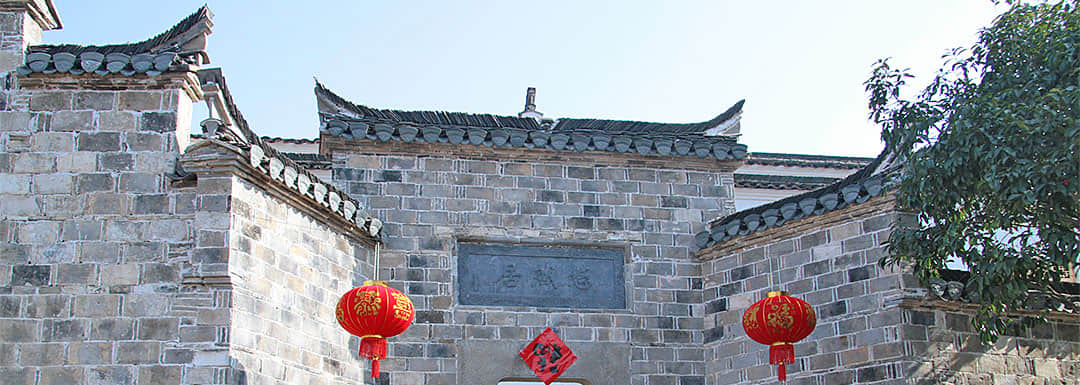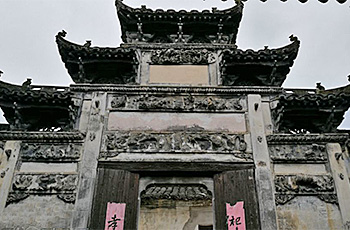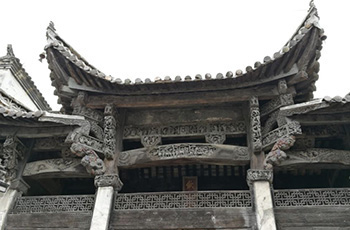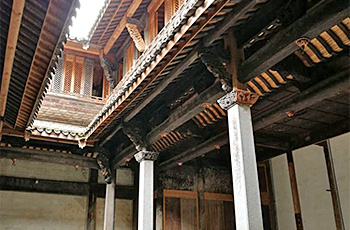Zhaji Village

Zhaji Village belongs to Taohuatan Town, Xuancheng County, Anhui Province. It is a national AAAA-level tourist attraction andstate protected historic site. Zhaji is titled as a Chinese traditional village and Chinese historical and cultural village, and is also known as the Chinese first village for sketching. By far, Zhaji Village is the largest existing Ming and Qing village in China.
- Chinese name: 查济村 zhā jì cùn
- Suggested time: 2-4 hours
- Tickets: RMB 80 per person
- Address: Junction of Jing County, Huangshan District and Qingyang County
- Best time to visit: all year around
- Open hours: 08:00-17:00
- How to get there: Take a public bus to Jing County then take the bus to Zhaji Village at the short-distance bus station in Jing County.
Highlights of Zhaji Village

De Gong Hall
Initially, there were 108 bridges, 108 ancestral halls and 108 temples in Zhaji Village, among which more than 140 ancient buildings, 40 bridges, 30 ancestral halls and 4 temples still exist.
De Gong Hall
De Gong Hall is located in Shuilang Lane of the village. Built in the Yuan Dynasty, the three-story gate building has relatively low eaves. The pillars were made of Phoebe zhennan , thick and round, and the foundation is structured as cladding type with no carve or polish. From the perspective of its architecture and carvings, there are many characteristics and styles of the Yuan Dynasty. In memory of Yongde Gong, the 7th forefather of Zhongxing, the building – which has three decorated archways supported by four pillars – is the only existing Yuan Dynasty building in Zhaji and one of the very rare Yuan Dynasty buildings in Anhui. The third layer of brick sculpture "CarpsJumping over Dragon Gate" in high relief is very precious.
Erjia Temple

Erjia Temple
The temple was also named Guangyu Hall, and was built in the late Ming and early Qing dynasties to commemorate Zha Qibao, the 6th forefather of Zhongxing. The building has a total construction area of 1100 square meters. It is best characterized as a Five-Phoenix building archway, finely carved wood and stone sculptures, and the architectural style of "seeing the bricks without seeing bricks". This ancestral hall is relatively intact compared to the others.
Ai Ri Hall
The hall was built in the Tianqi Period of the Ming Dynasty by the ancestors of Zha, who once served as capital official. The building is the best preserved ancestral house in the village. The plaque was a gift from the people at that time to recommended to the official "To be honest and upright, to love the people as if they were your children". All six brothers of this capital official were in the list of successful candidates in the government examination. The master of the examination wrote "Lan Tian Zhong Yu" which means "harvest on barren land", to commend the incredible achievement the brothers had made. The writing was then carved on the head of the stone gate of the front hall. In addition, the Ming Dynasty's "Chongqing Hall" and "Tien Si Gate" also have high ornamental value with exquisitely carving and delicate structure.
Zou Ma Lou
Zou Ma Lou is a building from the Ming Dynasty. The living room is in the middle of the building. A three-sided carved gold-plated bed in the wing room is made with exquisite craftsmanship and has gorgeous patterns. The red and green satin quilts show the richness and warmth of the family.
Honglou Bridge
It is said that initially there are 108 bridges in Zhaji Village. Although not all of them are well preserved now, there are still 15 small stone bridges such as Honglou, Tianzhong, and Lingzhi exist in the village. The red bridge, built in the Ming Dynasty, is the most colorful bridge in Zhaji.This arched stone bridge is 8 meters long, 5 meters wide and10 meters high. There was a small red building on this bridge where literati used to come and have a drink.
Bao Gong Temple

Bao Gong Temple
Bao Gong Temple is the largest temple reserved in Zhaji village. Located on the lower reaches of the Xuxi River, it is the first attraction along the river. It was initially built in the Ming Dynasty (1425 CE), but was destroyed during the Taiping Heavenly Kingdom movement and then rebuilt during the Qing Dynasty. Its total construction area was 1,737 square meters. Although the outward appearance looks ordinary, the building is extraordinary inside with all the marvelous details and internal structure.
Ru Song Pagoda
Ru Song Pagoda is located on the top of Songshan Mountain – east of Zhaji Village. In the fifth years of Jiaqing in the Qing Dynasty (1800), Zha's whole family raised funds for its construction. It is a five-story brick tower with dense eaves, 25 meters high, hollow, and with six corners. At the bottom there is a brick arch. Both the warping angle and the bottom of the tower body are damaged by now. In May 1985, the county people's government announced that it was a county-level key cultural relic’s protection unit.
Drop us a line and we'll connect you with the top China expert in no time!